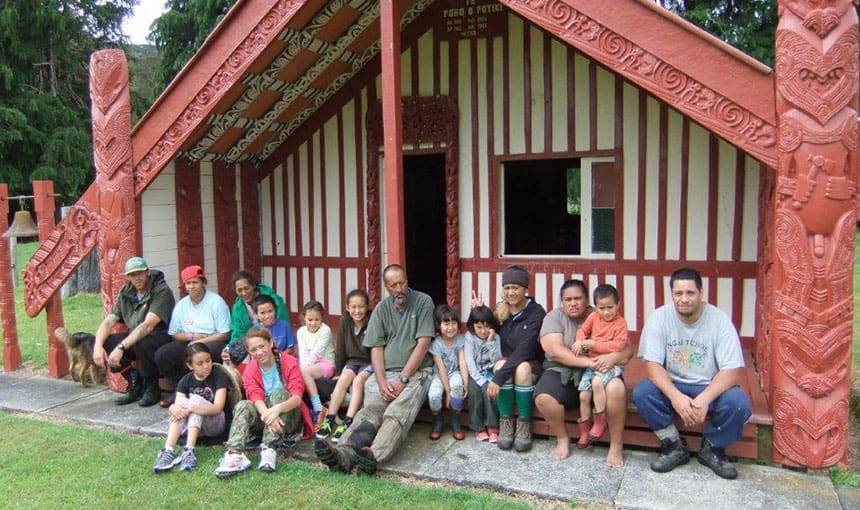This was one discovery from a collaborative study between Tūhoe Tuawhenua Trust and BioHeritage host Manaaki Whenua – Landcare Research. The research aimed to understand the values central to the Tuawhenua community’s relationship with the forests, lands and waterways. It’s part of a larger BioHeritage programme where researchers are investigating how kaitiakitanga (Māori guardianship) approaches help to reverse the decline of New Zealand’s biodiversity.
Led by Tuawhenua researcher Puke Timoti and Manaaki Whenua’s Dr Phil Lyver, the study aimed to understand and compare the spectrum of values held by different generations in the community in order to guide future planning, management, and monitoring of Tuawhenua forests. They also wanted to understand what type of trade-offs might be associated with different management decisions and economic development opportunities.
The study involved interviewing kaumātua and youth from the Tuawhenua community who have lived in and around the settlement of Ruatāhuna which is part of the larger Tūhoe nation – located in the heavily forested Te Urewera mountain ranges.
“The relationship Tuawhenua has with Te Urewera shapes and guides their values, beliefs and knowledge systems,” Puke says.
Values across four themes
The study considered forest values across four themes relevant to the Tuawhenua community:
- Importance of place
- Capacity of the forest to provide
- Connection between forest and community
- Future aspirations of Tuawhenua for their forests.
Mauri (life essence) and mahinga kai (food procurement) were the highest-ranking values across the four themes, followed by oranga (human well-being) and te ōhanga whai rawa (economic development).
The key challenge
Puke says a key challenge for the leadership within the community was balancing the costs and benefits of te ōhanga whai rawa against aspirations to nurture the mauri of the land, forest and rivers.
“For example, milling of large native conifers from Tuawhenua forests between 1950 and 1975 altered the forest structure.
“The benefits were local employment and a better standard of living that supported ahikāroa ꟷ uninterrupted connection to the land ꟷ which sheltered the language and culture for a little while.
“However, the alteration required trade-offs over other core values that are often fraught and unrealised. For example, the milling and removal of the large trees impacted the mauri of the forest. It also contributed to the decline in the abundance and availability of traditional forest foods and materials (mahinga kai).”
The Tuawhenua Trust recognised that values and activities like mahinga kai were important for other values such as matemateāone (community togetherness), manaakitanga (caring for others), knowledge retention and growth.
“In addition, ahikāroa was considered a crucial part of being linked to place and having an understanding of what’s happening in the environment because it instils an inherited right to contribute to – and make decisions about – the land and their environment.”
To find out more, read the published article on the study.
